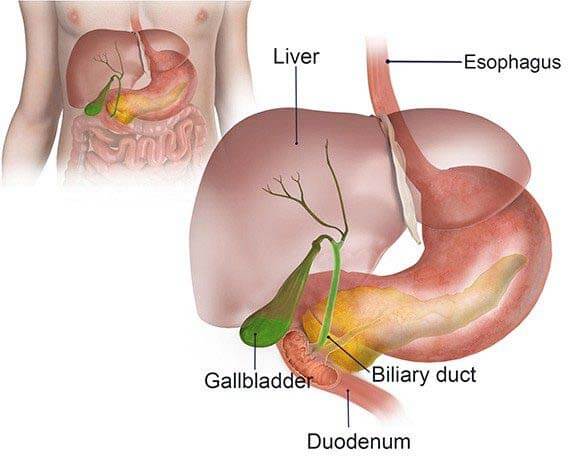
Because tumors of the bile duct are a less common form of gastrointestinal cancer, they require even more specialized experience to treat. Bile duct cancer must be treated when possible and surgery serves as the primary form of treatment. Although, as with surgical treatment for any condition, patients must be appropriate candidates for surgery in terms of age, overall health and other conditions.
The bile duct is the tube that connects the gallbladder and the liver to the small intestine. Cholangiocarcinoma means cancer of the bile duct. Bile duct tumors are a rare form of cancer, however, among causes of bile duct obstruction, they are not uncommon.
The surgeon will try to map the position of the bile duct growth as specifically as possible, using information from ultrasound studies, as well as CT and MRI imaging. The team may also perform a laparoscopy, inserting a special type of endoscope through small incisions in the skin to examine the status of the cancer and look for any spread to other tissues. Additionally, the team may use information from ERCP or PTC.
These and other diagnostic steps help the team to stage the cancer, in part by determining if it is contained only in the bile duct area or if it has spread. For patients deemed candidates for surgery, though, the surgeon’s exploration of the cancer during the operation also remains a critical assessment. In the open surgical procedure, the surgeon will examine the bile duct and the tissues around it.
If the cancer appears restricted in its location the team will proceed with resection. Alternatively, it may choose to simply relieve blockages caused by the tumor. Bile duct cancer in the distal bile duct (further away from the liver) is more like to be resectable than in the proximal bile duct (closer to the liver).
Operations aimed at this type of cancer are a form of major surgery that often involves removing not just the gallbladder and bile ducts, but also part of the liver, pancreas, or small intestine. These are not easy operations to undergo, and the chances of complications are significant. Most patients will remain in the hospital for the better one to two weeks after this form of surgical treatment.
Palliative Surgery
Sometimes bile duct cancer is too advanced or too widespread to be completely removed, and curative surgery is not possible. However, some types of surgical treatment can still be beneficial in addressing the resulting symptoms.
Biliary duct cancer can block the flow of bile into the digestive system and cause jaundice. If the tumor cannot be removed, sometimes specialists can employ minimally invasive, nonsurgical techniques that use catheterization or fine-needle-punctures (extensions of the ERCP or PTC procedures described above) to relieve biliary blockage.
If these options are not viable or are not successful for a given patient, the surgeon may perform bypass surgery to relieve the obstruction.